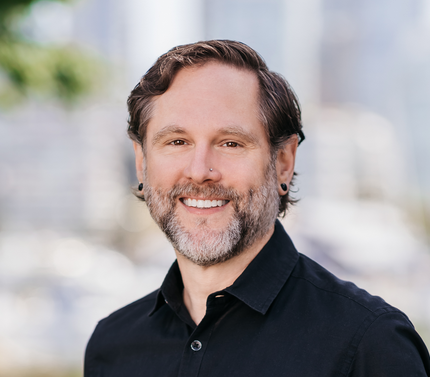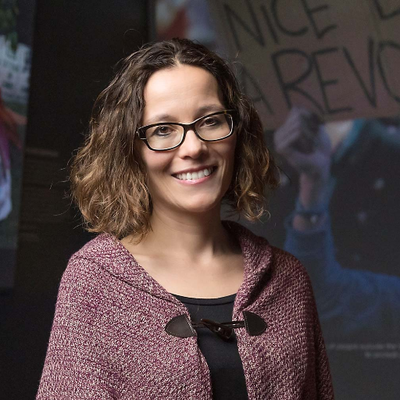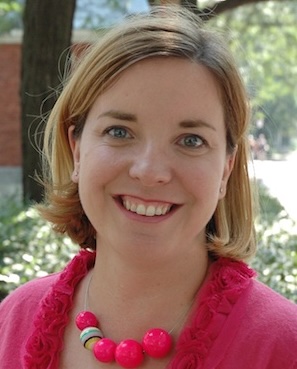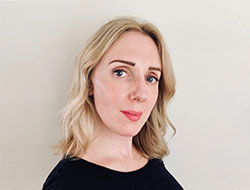Spring 2024
Museums in the City: Rethinking Colonial Urban Pasts
January 25: Urban Colonialism on the Salish Sea: Tales from Three Cities
Coll Thrush, Professor, Department of History, University of British Columbia
7:30pm-9:00pm PST, virtual event (Zoom)
Abstract
Victoria, Vancouver, and Seattle have very distinct histories, and yet they share one thing in common: settler colonialism. This talk examines the parallel histories of these three Salish Sea cities, focusing on the ways in which the processes of urban development dispossessed Indigenous peoples, but also the ways in which Indigenous communities have maintained connections to urban places. Taken together, these three cities illustrate how urban and Indigenous histories have been (and still are) deeply entangled with each other.
BioColl Thrush is Professor of History, Killam Teaching Laureate, and Faculty Associate in Critical Indigenous Studies at the University of British Columbia. He is the author of Native Seattle: Histories from the Crossing-Over Place and Indigenous London: Native Travellers at the Heart of Empire. His current research looks at the history of colonialism on the northwest coast of North America through the subject of shipwrecks in the so-called "Graveyard of the Pacific."
February 29: Civilizing the (Civic) Museum: Decolonial Work at the Museum of Vancouver
Viviane Gosselin, Director of Collections and Exhibitions, Museum of Vancouver
7:30pm-9:00pm PST, virtual event (Zoom)
To register for this virtual event, click here.
Abstract
For decades, marginalized communities, public intellectuals and academic scholars have called out museums for their role in reinforcing – wittingly or unwittingly – colonial attitudes, racial and social inequality, environmental disconnect and excessive consumption. In response to these criticisms and accompanied by much soul searching, (many) museums are deliberately leveraging their power as cultural influencers to make space for stories that challenge dominant narratives of progress and belonging (and not belonging). The Museum of Vancouver (MOV) has adopted models of co-creation and prioritizes community-led initiatives to pursue this goal. These practices support broader and more inclusive ways of conceiving the city’s past, present and future. This presentation will draw on examples of work at MOV to discuss how valuing and representing diverse knowledge, histories and experiences of the city in the museum space can help build more resilient communities.
BioViviane Gosselin is the Director of Collections & Exhibitions, and Curator of Contemporary Culture at the Museum of Vancouver. Her work on historical and environmental literacy seeks to make the museum a more responsive, empathetic, and democratic public space that prompts people to recognize their own capacity to effect positive social change. Viviane has led and co-curated several exhibitions that have been recognized nationally and internationally. She has authored several articles on participatory museology and intercultural curation and is co-editor of Museums and the Past: Constructing Historical Consciousness (UBC Press). Viviane is currently involved in developing sustainable exhibition design practices with a team of city staff, architects and designers committed to creating a no-waste city. Rather than talking about radical innovation, she prefers to focus on the power of small wins as a mean of furthering the social work of museums. Viviane is a member of the advisory group of the Coalition of Museums for Climate Justice. Since 2019, she has been a member of the Advisory Group for the Coalition of Museums for Climate Justice. Viviane earned her PhD at the University of British Columbia.
March 21: Rethinking the City Museum: A Dialogue
Jennifer Carter, Associate Professor, Department of Art History, Université du Québec à Montréal
Catherine Charlebois, Section Chief, MEM – Centre des mémoires montréalaises
5:00pm-6:30pm PST, virtual event (Zoom)
To register for this virtual event, click here.
Abstract
This conversation will explore the recent visioning work undertaken at the newly inaugurated MEM – Centre des mémoires montréalaises and the ongoing work its professionals have engaged in with regards to citizen museology in Montréal, Québec. From collecting and displaying oral histories to holding consultation sessions with diverse members of the city's population, museologists at MEM have refashioned their work in order to highlight the richness and diversity of the plural identities and histories that make up the fabric of Montreal. Collaboration, accessibility, inclusion, and innovation are all principles that have guided this work and will be discussed.
BiosJennifer Carter is Associate Professor in the Department of Art History and Director of the interfaculty graduate Museology programmes at the Université du Québec à Montréal. A core area of her research investigates the global phenomenon of human rights museums, and considers how historical and social justice are negotiated curatorially and pedagogically in cultural institutions dedicated to human rights in different geo-cultural and political contexts around the world. She earned her PhD at McGill University in Montréal and has published her research widely in English and French.
Catherine Charlebois is a curator, author, and researcher. She designs exhibitions to highlight not only different moments in the past, but also the memories of the citizens who lived and remember those times. She is recognized as a leader in the museum sector in the field of oral history and has led many museum projects which honor and defend the importance of living memory. She is now the Section Chief at the MEM – Centre des mémoires montréalaises. The new Centre d’histoire de Montréal where she has been the curator of exhibitions and collections from 2009 to 2019. As a specialist in the display of oral histories, she has coordinated several award-winning exhibitions: The Habitations Jeanne-Mance, 50 years, Lost Neighbourhoods (winner of an Oral History Association award for Oral History in a Nonprint format in 2012), Scandal! Vice, Crime and Morality in Montreal, 1940-1960 (winner of an Award of Merit and a History in Progress award from the American Association for State and Local History in 2016), and Explosion 67 – Youth and Their World. She is also the co-author of two award-winning books: Quartiers disparus. Red Light, Faubourg à m’lasse, Goose village (2014) and Scandale! Le Montréal illicite, 1940-1960 (2016) and co-author of the scientific article Les sources orales au cœur de l’exposition muséale. L’expérience du Centre d’histoire de Montréal in the Revue d’histoire d’Amérique française (2015). Prior to this, Ms. Charlebois worked at the McCord Museum of Canadian History as an educational coordinator and at the Museum Village (Monroe, NY) as a curator. She is an alumna of the Cooperstown Graduate Program from which she received her MA in History Museum Studies in 2000.Fall 2023
Artificial Intelligence and the Future of Cities
September 28: AI and Cities: From Social to Spatial Inclusion
Shin Koseki, Assistant Professor and UNESCO Chair in Urban Landscape, School of Urban Planning and Landscape Architecture, University of Montreal
Abstract
Cities are where most artificial intelligence systems are deployed and where they are most likely to impact people, especially marginalized groups and individuals. Yet, not much has been done to improve the governance of AI in cities. Many scholars, experts, and stakeholders have shown how AI biases can be detrimental to various urban segments of the population, and unfairly treat women, people of color, cultural and ethnic communities, lgbtq+ people, kids, and elderly people across various domains. AI-powered discrimination is especially problematic in cities, where those groups seek haven. So, what can we, as researchers, designers, and planners do to make both AI and cities more inclusive? “AI & Cities” is a framework developed with Mila and UN Habitat to reduce the risks posed by AI onto city dwellers by making AI development more responsible. It leads to conceiving AI locally with “citizens” through a co-design and interactive process. We then apply this process in the framework of our research project aimed at making Montreal's public space more inclusive of everyone and more adapted to the diversity of the city's population.
Bio
Shin Koseki is an Assistant Professor at the School of Urban Planning and Landscape Architecture in the Faculty of Environmental Design, the Director and the Chairholder of the UNESCO Chair in Urban Landscape. Trained in architecture and urban planning in Canada and Switzerland, he is interested in the integration of new technologies in planning practices, the contribution of interactive democracy to the sustainable development of territories, and the role of public space in the acquisition of knowledge and skills. His research interests include the application of artificial intelligence systems in urban design and new processes of environmental and technological governance. Before joining the University of Montréal, Shin Koseki conducted research at the Swiss Federal Institutes of Technology in Lausanne (EPFL) and Zurich (ETH Zurich), the University of Oxford (Oxon.), the National University of Singapore (NUS), the Massachusetts Institute of Technology (MIT), the University of Zurich (UZH), and the Max Planck Institute for Art and Architecture History (Bibliotheca Hertziana). Back in his hometown of Montreal, he works with his students on the revitalization and renaturalization of the St. Lawrence River and on improving the quality of life of the communities that live there.
October 26: The Latent Aesthetics of the AI City
Agnieszka Leszczynski, Associate Professor, Department of Geography and Environment, Western University
Abstract
In this talk, I engage in speculative conjecture about what the streetscapes of the AI suffused city in waiting – which I refer to as the latent AI city – might ‘look’ like. I do so by drawing on my work on digital urban platforms in North American cities, which I have identified as driving material transformations in urban aesthetics. Docked bikesharing infrastructure in Vancouver comprises a serialized aesthetics increasingly constitutive of what gentrification ‘looks like’ at the subneighbourhood scale of the city, which I use to conjecture about what kinds of AI and algorithmic-driven presences may likewise show up as markers of urban change. Next, I consider whether glitchy feedback loops between social media platforms and urban architecture – which finds its apogee in the ‘emoji house’ in Manhattan, CA – presage the ‘mindjourinification’ of urban aesthetics, where urban built environment forms resemble the visual signatures of AI image generation. And finally, new presences in urban built environments – including various kinds of ad-hoc signage showing up in Vancouver – represent nascent attempts to govern the otherwise unruly landscapes of urban platformization through aesthetic forms, which raises questions for how the increasing presence of AI materialities on city streets will be responded to by cities themselves.
BioAgnieszka Leszczynski is an Associate Professor in the Department of Geography & Environment at Western University in Canada. She is an Editor of Dialogues in Human Geography, Environment and Planning F: Philosophy, Theory, Models, Methods, and Practice, and a former editor of Big Data & Society. Her current work focuses on the intensifying integration of digitality and cities.
November 30: Designing the AI City: Simulation and Human-Centred Urban Design
Brandon Haworth, Assistant Professor, Department of Computer Science, University of Victoria
Abstract
Artificial Intelligence (AI) has quickly become a common phrase in our daily lives, often associated with the remarkable ability to generate text and images. Yet, AI extends beyond these creative realms, offering opportunities to enhance our simulation, design, and collaboration efforts. It has the potential to collaborate with us, augmenting our capacity to represent ourselves, and optimize physical spaces. This talk delves into the profound potential impact of AI on simulation and human-centric urban design. In recent decades, synthetic crowds, or crowd simulation, has revolutionized various domains. This technology has enabled the cost-effective generation of elaborate scenes in film and animation and recently emerged as a powerful tool for tackling complex and often dangerous scenarios within the urban landscape. The application of crowd simulation has ushered in breakthroughs in predictive urban design and safety-critical analysis, making it invaluable for architects, urban planners, and policymakers alike. Despite its growing prominence, the application of crowd simulation presents several challenges. This talk delves into these challenges, including issues related to result generalizability, representation fidelity, user-friendliness, and analytical capabilities by examining the intersection of artificial intelligence, human representation, and environment design in the context of simulation and human-centric urban planning. This exploration underscores the vital role of AI in improving simulation, design processes, and human representation, which collectively contribute to shaping the cities of the future.
BioBrandon Haworth is an Assistant Professor in the Department of Computer Science within the Faculty of Engineering and Computer Science at the University of Victoria. He is the Director of the Graphics, Artificial Intelligence, Design, & Games (GAIDG) Lab and a Research Fellow at the Institute on Aging and Lifelong Health at the University of Victoria. Brandon received the B.Sc. degree in Computer Science from York University in 2013, M.Sc. in 2016, and Ph.D. in 2019, and was a Post-Doctoral Fellow with the Ontario Research Fund/Intelligent Systems for Sustainable Urban Mobility (ORF/ISSUM) project in 2019/2020. His past research concerned the development and gamification of interactive motor speech rehabilitation for people with neurodegenerative diseases. Brandon works within the broad areas of Graphics, Simulation, Artificial Intelligence, and Human-Computer Interaction. His primary research focuses are diversity in crowd simulations, locomotion and biomechanical modelling in human steering, multi-agent reinforcement learning, and human-centric artificial intelligence in simulation and design. The applications of this research cut across several fields, including gaming, rehabilitation, architecture, urban planning, predictive design, safety analysis, inclusive media, assistive technology and more. He is a Member of the ACM and the IEEE and is an Associate Editor of the journal, Computer Animation and Virtual Worlds.









